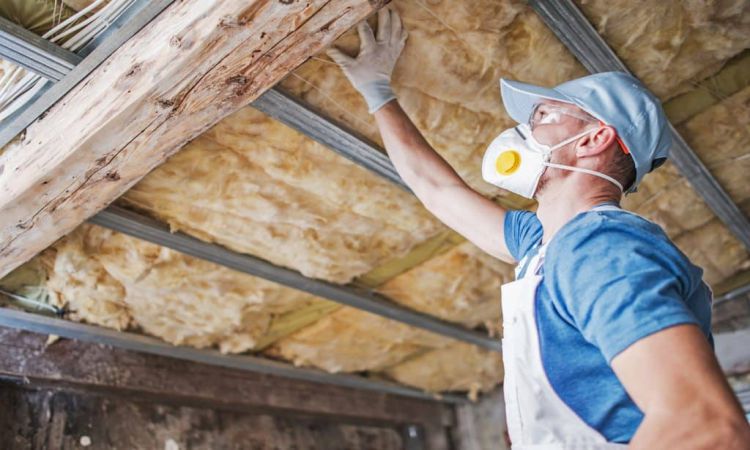 There are many types of insulation agents with different properties to choose from if you’re looking to insulate your home. Spray foam insulation has consistently demonstrated outstanding performance and is ideal for both commercial and residential buildings (old and new). Opting to use spray foam for your insulation needs is a great decision. However, spray foam is classified into two types, open-cell, and closed-cell foam, and to get the best results means getting the facts right on each of them before making a choice. You can check out an elaborate expert explanation of their particular attributes at open-cell-vs-closed-cell-spray-foam-insulation-in-austin-tx/ to dispel all the common misinformation and aid your decision.
There are many types of insulation agents with different properties to choose from if you’re looking to insulate your home. Spray foam insulation has consistently demonstrated outstanding performance and is ideal for both commercial and residential buildings (old and new). Opting to use spray foam for your insulation needs is a great decision. However, spray foam is classified into two types, open-cell, and closed-cell foam, and to get the best results means getting the facts right on each of them before making a choice. You can check out an elaborate expert explanation of their particular attributes at open-cell-vs-closed-cell-spray-foam-insulation-in-austin-tx/ to dispel all the common misinformation and aid your decision.
This article will help you understand all about open-cell spray foam insulation, including what it’s made of, how it works, and the associated benefits. Read on!
Table of Contents
What is Open-Cell Spray Foam Insulation?
Open cell foam is a lightweight, highly supple insulation material commonly used in attics, crawl spaces, and open wall cavities. It’s renowned for its excellent air sealing and other capabilities due to its relatively high expansion and flexibility. However, compared to closed-cell foam insulation, open-cell foam has a relatively lower R-value (ranges from 3.6 to 3.8 per inch compared to above 6.0 per inch for closed-cell foam).
How Open Cell Spray Foam Works
The small bubbles (cells) making up spray foam are deliberately left open, hence its high expandability and flexibility potential. Its superbly high expansion rate (it expands approximately 100 times its original size) makes it highly effective in preventing air movement at the point of application, making it quickly expand into hard-to-reach nooks and crannies.
Open Cell Spray Foam Installation
If you’re working with a professional (which is greatly recommended), they will first assess and determine if open-cell spray foam is suitable for your home and insulation needs. After committing to working with them and signing a binding contract, the installation can begin.
If you’re DIY, start by ensuring that there is good ventilation. It’s a wise idea to get yourself a vented mask along with other safety-enhancing paraphernalia, such as gloves and eye protection, to help avoid contact with the foam. Also, ensure the area you’re spraying is fully prepped and free from anything that can get in the way of the installation, such as furniture and pets.
The area to be insulated is then sprayed. Once the installation is done, wait for the foam to dry before cleaning up. This will take anything between 24 to 48 hours.
Benefits of Open Cell Spray Foam Insulation
There are plenty of benefits to choosing open spray as your insulation choice. Below is a list and a brief explanation of some of them.
-
Relatively Lower Cost
Cost savings are one of the most notable benefits of open-cell foam insulation. The cost of manufacturing open-cell foam is relatively cheap and, coupled with its impressive expansion rate, makes it inexpensive.
-
No Water Retention
Open-cell foam is hydrophobic and retains only about 5% or less of its water weight. This means you won’t have to go through the hassle and additional expenses of re-installing it if there is a water leak in your home.
-
Incredible Expansion Capability
Open cell foam agents are known for their super expansion rate. This makes it quite easy to fill up everywhere within the target area, including hard-to-reach places.
-
Sound Insulation
Open cell foam doesn’t just effectively seal your home but also promotes peace and quiet within your home. This is due to its high sound-dampening properties.
-
Discourages Pests and Mold
If you have a pest and rodent problem where you live, you won’t have to worry about them finding their way into your attic or crawl spaces. Open cell foam insulation agents discourage pests and rodents as it offers no food to sustain them.
Additionally, this insulation material can’t also provide the conditions for mold and mildew growth.
Spray foam insulation, in general, is an excellent insulator and works wonders in creating the perfect air seal to insulate your home effectively. Choosing the best type of spray foam insulation is not easy, and it all boils down to your home and insulation expectations and needs. Using the proper spray foam insulation is crucial for a smooth installation process. Hopefully, this article has enabled you to understand all about open-cell spray foam insulation and edged you closer to determining how suitable it is for your project.
If you’re unsure which spray foam insulation type is the right option for your home, entrusting your insulation needs to insulation experts is your best bet. They’ll advise on the best insulation option to help maximize your home’s R-value, overall comfort, and energy efficiency.






